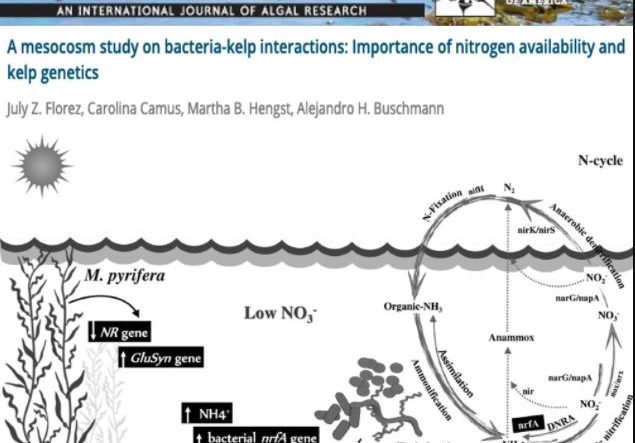Macroalgal holobiont studies involve understanding interactions between the host, its microbiota, and the environment. We analyzed the effect of bacteria–kelp interactions on phenotypic responses of two genetically distinct populations of giant kelp, Macrocystis pyrifera (north and south), exposed to different nitrogen (N) concentrations. In co-culture experiments with different N concentration treatments, we evaluated kelp growth responses and changes in three specific molecular markers associated with the N cycle, both in epiphytic bacteria (relative abundance of nrfA-gene: cytochrome c nitrite reductase) and macroalgae (expression of NR-gene: nitrate reductase; GluSyn-gene: glutamate synthase). Both kelp populations responded differently to N limitation, with M. pyrifera-south sporophytes having a lower specific growth rate (SGR) under N-limiting conditions than the northern population; M. pyrifera-north sporophytes showed no significant differences in SGR when exposed to low-N and high-N concentrations. This corresponded to a higher GluSyn-gene expression in the M. pyrifera-north sporophytes and the co-occurrence of specific nrfA bacterial taxa. These bacteria may increase ammonium availability under low-N concentrations, allowing M. pyrifera-north to optimize nutrient assimilation by increasing the expression of GluSyn. We conclude that bacteria–kelp interactions are important in enhancing kelp growth rates under low N availability, although this effect may be regulated by the genetic background of kelp populations.
FUENTE: https://onlinelibrary.wiley.com/doi/10.1111/jpy.13213













